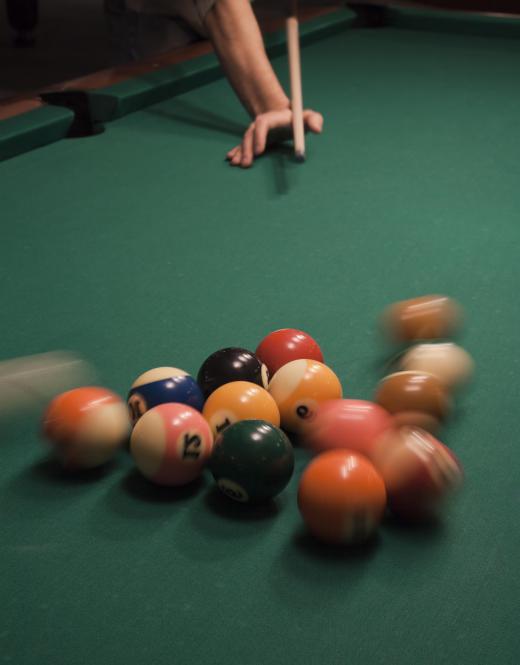A cue lathe is a piece of machinery that is used to create, repair and maintain a cue. Cues, the long wooden sticks used to strike balls in table-top games such as pool, billiards and snooker, usually have one large rounded end and one small, tapered end. It must be very straight and precisely symmetrical in order to work properly. This need for symmetry is why a lathe is used.
There are various types of lathes for creating different objects, and they come in many sizes. An industrial cue lathe will be a large and stationary. For personal use, or for a small shop, many options are available. A relatively small cue lathe can be less than 2 feet (about .6 m) long, and a larger lathe can be a much as 6 feet (1.8 m) long. It can weigh less than 30 pounds (13.6 kg) or more than 100 pounds (45.5 kg).

The smallest lathes are designed to be portable, and the largest remain stationary. They are grouped into two categories: lightweight lathes and precision, or standard manufacturing, lathes. Using a cue lathe of any size requires a work bench or other flat, secure surface on which the lathe will rest.
Cues can be constructed of a single piece of wood or two pieces that are assembled for play. In a two-piece cur, the handle end is called the butt, and the striking end is called the shaft. For a two-piece cue, both the butt and the shaft can be created on a cue lathe. Alternatively, an entire single-piece cue can be constructed on a lathe.

The main parts of a cue lathe include a headstock on one end and the headstock on the other end, between which a long block of wood is secured. A motorized router is used to cut away excess wood until the desired shape is achieved. The wood is secured between two bits and rotates at variable speeds, depending on the type of motor. As the router moves along the wood, shaping it into a cylinder, a great deal of dust is created. As a result, a cue lathe usually is fitted with a vacuum that collects dust created during the rapid cutting away of wood.
Numerous vendors offer options for buying a lathe. A used cue lathe will usually cost less than a new one of comparable value. Cue lathe parts such as spindle bores, belts, routers, motors and dust collection systems can be purchased to improve an existing cue lathe.
